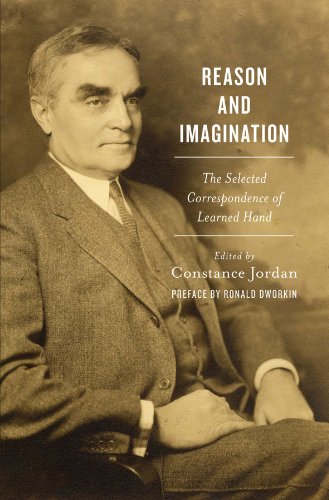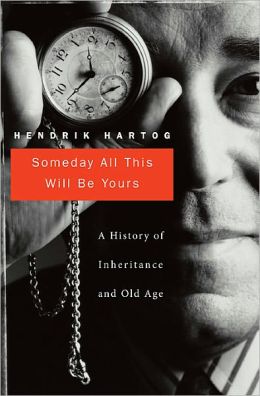[We are quite grateful to
Shane Landrum, a Ph.D. Candidate in American History at
Brandeis University and an Instructor in the Department of History at
Florida International University, for this excellent account of a panel at the recently concluded annual meeting of the American Society for Legal History.]
"Entitling Marriage, Contesting the Family: The Politics of Dependency from the Progressive Era to the Civil Rights Revolution"
A very well-attended session at the recent annual meeting of the American Society for Legal History was "Entitling Marriage, Contesting the Family: The Politics of Dependency from the Progressive Era to the Civil Rights Revolution," which brought together interesting new work on United States women's activism, family law, and the state.
Rebecca Rix, Princeton University, gave a paper titled "'Every citizen a Sentinel: Every home a sentry box!': Revolutionary Men, Home Protection, and the Popularization of Modern Conservative Thought in the 1920s." She opened with an account of the 1924 Massachusetts referendum on the federal child labor amendment. Despite the well-known progressive tendencies of Massachusetts, voters defeated the child labor amendment by a 3-to-1 margin. This success, Rix argued, marked a sea change in the ability of conservatives to oppose progressive legislation. Elite women who had been active in the fight against woman suffrage used the tools of direct democracy and grassroots organizing. The Sentinels of the Republic, led by a number of prominent industrialists, mobilized Americans against child-labor reform by arguing that increased federal power threatened parents' authority over their own children. Likewise, they reframed their opposition to child welfare programs as a constitutional objection to plenary taxation by Congress, invoking the image of Samuel Adams at the Boston Tea Party.
The Sentinels also took advantage of recent court cases to bring Catholics around to their anti-taxation, limited-government positions. At a time when the Ku Klux Klan was active against Massachusetts Catholics and Oregon courts were challenging the legality of Catholic parochial schools, working-class Catholics felt significant threats. As a result, Catholics were convinced to vote against a child-labor law which, from a modern perspective, we might expect that they would have supported. The 1924 referendum, Rix concluded, was a moment where Brahmins and Knickerbockers successfully turned the tide of progressive reforms by using a rhetoric of protecting families against state power.
Kristin Collins, Boston University, spoke on "Entitling Marriage: A History of Marriage, Public Money, and the Law." This paper was an excerpt from her current book project, which focuses on how marriage in the United States became a tool for allocating social goods, including citizenship. Asking why marriage has been such a stubborn feature of American entitlements programs and of citizenship, she explored the 1977 Supreme Court case
Fiallo v. Bell. In
Fiallo, a group of unwed US-citizen fathers sought special immigration status for their out-of-wedlock children under the Immigration and Nationality Act of 1952. The
Fiallo plaintiffs claimed that they were the victims of an unfair sex distinction in federal law, but the court used the doctrine of plenary power to defer to Congressional judgment.
In the summer of 1976, while
Fiallo was pending, ERA-supporter Elizabeth Holtzman (House, D-NY) seized on the idea of judicial deference to Congress. She drafted legislation which would have treated children of unwed citizen fathers and unwed citizen mothers equally for immigration purposes, but the legislation died once Holtzman lost a re-election attempt. In 1981, as the Reagan administration took office, they interpreted
Fiallo as the Supreme Court's blessing of congressionally-approved sex-specific legislation. Thus, Collins argued, any understanding of the persistence of marriage as a tool for social provision has to include the role of institutional dynamics in limiting change.
Serena Mayeri, University of Pennsylvania, spoke on "What's Wrong with Illegitimacy (Penalties)? Non-Marital Childbearing in Court, 1966-1979." In general, most federal sex equality cases during the 1970s confirmed the legal fungibility of husbands and wives, even as they also confirmed "marital supremacy." Between 1968 and 1972, a series of Supreme Court decisions struck down illegitimacy penalties, building on arguments made by University of Illinois professor Harry Krause. Krause used two major lines of argument. First, in the wake of the Moynihan Report, he claimed that illegitimacy penalties had a disproportionate effect on African-American children and further weakened African-American communities. Secondly, just as children had no control over their skin color, they had no control over their parents' marital status and should not be subject to legal disadvantages as a result.
Krause's arguments succeeded before the Supreme Court. However, as Mayeri pointed out, feminists had an alternate, and in some ways more compelling, set of arguments against illegitimacy penalties. Feminists Aleta Wallach and Patricia Tenoso argued that these penalties, especially in the workplace, injured unmarried women who were financially responsible for their own children. In 1973, Katie Mae Andrews successfully sued a Mississippi school district for its policy of not hiring unwed mothers. In the wake of
King v. Smith (1968), feminists argued against illegitimacy penalties on the basis of a woman's right to privacy. Further, some feminists argued that illegitimacy penalties limited unmarried women's ability to choose childbearing (and financial support for their nonmarital children) rather than abortion. However, these feminist arguments largely did not make it into court. Mayeri offered two reasons for this. The first was timing; by the early 1970s, the Supreme Court had already embraced the child-centered logic presented by Harry Krause, providing a good foundation for incremental litigation strategies. Secondly, as American politics shifted to the right, feminist litigators gave up on dismantling the legal centrality of marriage, worrying that such strategies would play into the hands of influential conservatives like Phyllis Schlafly. Instead, they focused their attention on dismantling male supremacy, leaving the legacy of marital supremacy intact.
In her comment,
Linda Kerber, University of Iowa, highlighted how all three papers pointed to the centrality of coverture in American law and policy. Second-wave feminists, she said, absolutely were overturning the assumptions that men and women made about their lives and their relationships. Memorably, she asserted, "Phyllis Schlafly was not wrong." She highlighted the extent to which mid-20th-century feminism was an intellectual revolution and that these papers were not only social, political and legal histories but also intellectual histories. After offering brief comments on each paper, Kerber observed that historians face challenges in teaching students about the fierce, bitter struggles of feminists in the 1970s, and she encouraged those present to find ways to teach these topics more effectively.
Christopher Tomlins, University of California-Irvine, chaired the session and guided the room through a thought-provoking sequence of questions and answers.














